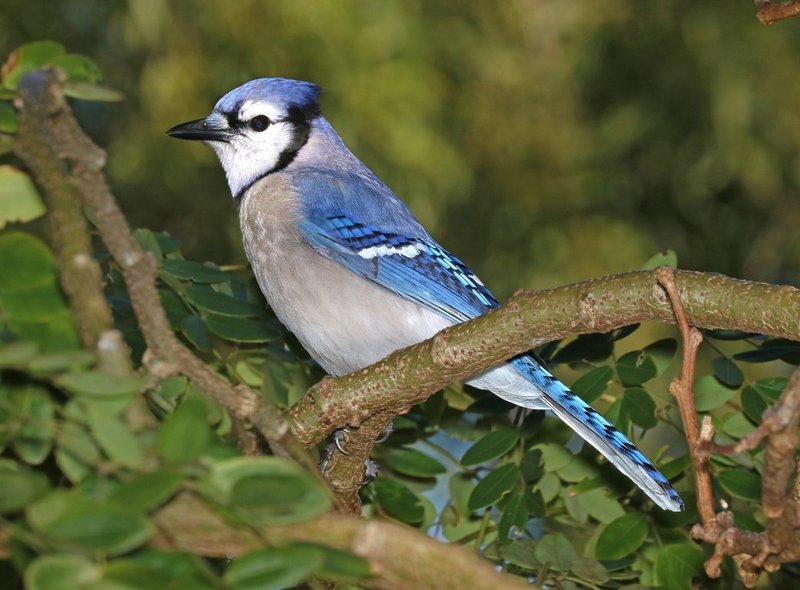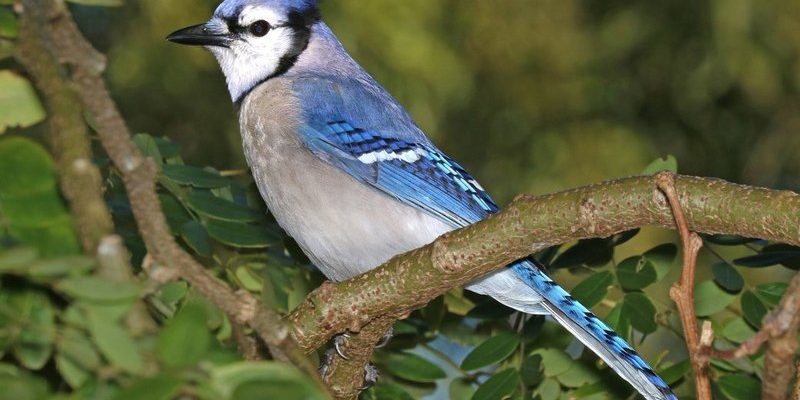
Imagine stepping into a lush forest, where vibrant colors dance among the trees. You might spot a striking bird, with feathers as brilliant as a summer sky: the Blue Jay. These birds are not only eye-catching but also full of personality. Known for their intelligence and playful behavior, Blue Jays have a special charm that draws interest from birdwatchers and casual observers alike.
But what exactly makes the Blue Jay so fascinating? From their distinctive blue plumage to their complex social structures, there’s so much to explore about these remarkable creatures. If you’re curious about their habits, habitat, and unique traits, you’re in for a treat! Let’s dive deeper into the world of Blue Jays and uncover what makes them so special.
Physical Characteristics
Blue Jays are renowned for their striking appearance. Their feathers display a stunning range of blue, white, and black, making them easily recognizable. The blue color comes from the microscopic structure of the feathers rather than pigments, a phenomenon known as structural coloration. They have a distinctive crest on their head that can be raised or lowered depending on their mood. This crest, along with their bold facial markings, gives them a unique and expressive look.
In terms of size, Blue Jays typically range from 9 to 12 inches in length, with a wingspan of around 13 to 17 inches. Their weight can vary between 70 to 100 grams. This size makes them medium birds, capable of holding their own in the avian world. Their strong, pointed beaks are well-adapted for cracking open nuts, which are a vital part of their diet.
Here’s a quick fact: the coloration of Blue Jays can change subtly depending on their environment. In areas with dense foliage, their blue may appear darker to blend in better with the surroundings. Adaptability is key to their survival, and they demonstrate this in more ways than just color.
| Characteristic | Details |
| Size | 9 to 12 inches |
| Wingspan | 13 to 17 inches |
| Weight | 70 to 100 grams |
| Color | Blue, white, and black |
| Habitat | Deciduous and mixed forests, urban areas |
| Diet | Nuts, seeds, insects, small animals |
| Lifespan | 7 years on average |
Habitat and Distribution
Blue Jays are widespread across North America, primarily found in the eastern and central regions. They thrive in a variety of habitats, including deciduous forests, mixed woodlands, and even urban areas. This adaptability allows them to coexist with humans, often seen at bird feeders and parks. They prefer areas with plenty of trees, which they use for nesting and protection from predators.
During colder months, Blue Jays may migrate south in search of food, although many choose to stay in their breeding grounds year-round. Their ability to adapt to changing environments has contributed to their robust population. In fact, these birds are known for their intelligence, often utilizing problem-solving skills to access food sources. If you’ve ever watched a Blue Jay at a feeder, you might see them cautiously approach, then swoop in for a snack!
You might be wondering what happens when their habitat changes. Urban development can pose challenges, but Blue Jays often thrive in cities where they find ample food. Their cleverness allows them to navigate the complexities of human environments, and they’ve been observed using tools and even mimicking other bird calls to communicate.
Diet and Feeding Behavior
Blue Jays are omnivorous and have a varied diet. They primarily feast on nuts, especially acorns, which they play a crucial role in dispersing. Acorns are not just their favorite food; they also store them for winter, burying them in different locations. This behavior not only helps them survive when food is scarce but also contributes to forest growth as new oak trees sprout from the buried acorns.
Besides nuts, they enjoy seeds, fruits, insects, and even small animals. Their adaptability in diet allows them to thrive in changing conditions. If you’ve ever seen one at your bird feeder, you know how they can be quite the little thieves! They’re known to steal food from other birds, showcasing both their boldness and resourcefulness.
When feeding, Blue Jays are social creatures. They often gather in groups, sometimes called a “band,” to forage together. This social feeding can create a lively atmosphere, filled with their characteristic calls and chatter. The more, the merrier, right? Watching them interact can be just as entertaining as observing them forage!
Behavior and Social Structure
One of the most intriguing aspects of Blue Jays is their complex social structure. These birds are known for their intelligence and problem-solving skills. They communicate through a variety of calls, each serving a different purpose, from warning of predators to calling others to food sources. Their vocalizations can mimic other birds, which adds to their mystique.
Blue Jays are also known for their playful behavior. They can often be seen engaging in acrobatic flights, chasing each other through the trees or playing games with fallen leaves. This playful nature is not just for fun; it helps strengthen social bonds within their groups. Their social interactions can be quite sophisticated, with hierarchies often forming based on strength and age.
An interesting behavior you might witness is their “puffing up” mechanism. When excited or threatened, they can puff out their feathers, making themselves appear larger. This display can deter potential threats and assert dominance in social situations. It’s a fascinating glimpse into how these intelligent birds interact with their environment and each other!
Reproduction and Nesting
Blue Jays typically begin their breeding season in early spring. They are monogamous and often mate for life, forming strong bonds. The female is responsible for building the nest, usually located in dense foliage or trees. She uses materials like twigs, grass, and even human-made items such as strings or paper to construct a sturdy nest.
Once the nest is complete, the female lays 3 to 6 eggs, which she incubates for about 16 to 18 days. The male plays a crucial role during this period by bringing food to the female. After the eggs hatch, both parents share the responsibility of feeding the chicks. This teamwork is essential for the survival of their young, and it’s heartwarming to watch the parents care for their little ones.
After about 18 to 21 days, the chicks fledge, meaning they are ready to leave the nest. However, they often stay close to their parents for a while afterward as they learn the ropes of finding food and navigating their environment. This extended care ensures that the young Blue Jays have a better chance of survival in the wild, where challenges abound.
Conservation Status
Currently, Blue Jays are not considered endangered. Their populations remain stable across North America. Thanks to their adaptability and intelligence, they can thrive in various environments, including urban settings. Their ability to adjust to changing habitats, such as urban sprawl, has allowed them to maintain a healthy population size.
However, habitat loss due to deforestation and development can still impact local populations. Conservation efforts aimed at preserving natural habitats are crucial for ensuring that Blue Jays continue to flourish. Planting native trees and maintaining bird-friendly spaces in your backyard can make a difference!
Additionally, education about the importance of Blue Jays in our ecosystems can foster appreciation and motivate people to protect these birds. They play a significant role in seed dispersal, contributing to forest regeneration. So, every time you see a Blue Jay at your feeder, remember the bigger picture of how their presence impacts the environment.
FAQ
What is the lifespan of a Blue Jay?
Blue Jays typically have a lifespan of about 7 years in the wild. However, some individuals have been known to live much longer, with a record of around 17 years. The lifespan can be influenced by various factors, including predation, food availability, and environmental conditions.
Are Blue Jays migratory birds?
While Blue Jays can be migratory, many do not migrate and instead stay in their breeding territories year-round. Migration often depends on food availability, particularly acorns and other nuts. In colder months, some Blue Jays may travel south, but urban areas often provide enough resources to support them throughout the winter.
Do Blue Jays mate for life?
Yes, Blue Jays are known to be monogamous and often form lifelong pairs. Once they choose a mate, they will typically stay together throughout the breeding season and beyond. This strong bond plays a crucial role in their nesting and parenting efforts.
How can I attract Blue Jays to my yard?
To attract Blue Jays, consider setting up bird feeders stocked with their favorite foods, such as peanuts, sunflower seeds, and corn. They are drawn to feeders that are sturdy and can accommodate their size. Planting native trees and shrubs can also provide natural sources of food and nesting sites, making your yard more inviting.
What sounds do Blue Jays make?
Blue Jays are known for their diverse vocalizations. They can make a variety of calls, ranging from loud, distinctive “jay jay” sounds to softer coos. They can even mimic the calls of other birds and animals, showcasing their remarkable vocal abilities. Each call has a specific purpose, such as warning others of danger or signaling food availability.
What do Blue Jay fledglings look like?
Blue Jay fledglings are initially quite different from adults. They are generally covered in soft, grayish-brown down feathers, with a bit of blue around the wings and tail. As they mature, they gradually develop the striking blue plumage characteristic of adult Blue Jays. During the fledgling phase, they rely heavily on their parents for food and protection.
Are Blue Jays aggressive or territorial?
Blue Jays can be territorial, especially during the breeding season. They are known to defend their nesting territories aggressively from other birds. Their strong, vocal nature allows them to assert their place in the avian community. However, they can also be social and enjoy feeding in groups, especially in non-breeding seasons.
What is the Blue Jay’s role in the ecosystem?
Blue Jays play a vital role in their ecosystems, particularly as seed dispersers. By burying acorns and other seeds for later consumption, they contribute to forest regeneration. Their foraging habits help ensure that new plants grow, which supports a variety of wildlife and maintains biodiversity. So, every Blue Jay isn’t just a pretty face; they’re nature’s helpers, too!
Can Blue Jays be kept as pets?
Keeping Blue Jays as pets is generally not recommended or legal in many areas. They are wild birds and require specific care and environments that are hard to replicate in captivity. Additionally, many species of jays, including Blue Jays, are protected under the Migratory Bird Treaty Act, making it illegal to capture or keep them without special permits.
What should I do if I find an injured Blue Jay?
If you come across an injured Blue Jay, it’s important to contact a local wildlife rehabilitation center for assistance. They have the expertise to assess the bird’s condition and provide the necessary care. It’s best to avoid trying to handle the bird yourself, as this can cause additional stress or harm.
Are Blue Jays social birds?
Yes, Blue Jays are social birds! They often gather in groups, especially outside of the breeding season. This social behavior can be seen during feeding times when they forage together, call to one another, and engage in playful antics. These interactions are an essential part of their lifestyle, helping them bond and communicate effectively.

